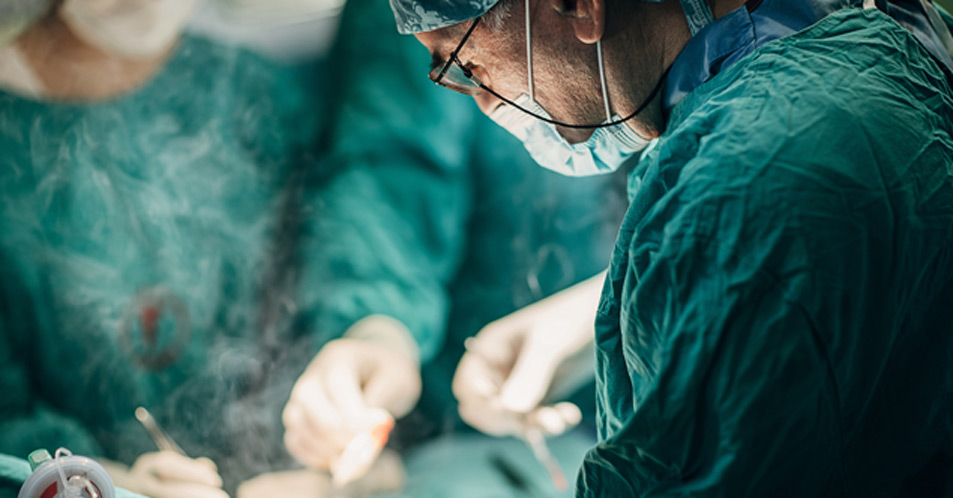Endoscopic sleeve gastroplasty (ESG) is a minimally-invasive weight loss procedure that uses an endoscopic suturing device to reduce the size of the patient’s stomach. The procedure achieves similar results as a surgical sleeve gastrectomy but without the need for surgery.
Patients with a body mass index of 30 or higher may benefit from an endoscopic sleeve gastroplasty. If diet and exercise alone have not brought sufficient results, an ESG could support long-term weight loss.
Like other weight loss programs, patients will need to make a commitment to living a healthier lifestyle to ensure long-term and permanent weight loss.
The procedure can also provide other health benefits, such as lowering blood sugar and reducing the risk of developing other weight-related illnesses.
Benefits of Endoscopic Sleeve Gastroplasty
- No incisions or scarring
- No overnight hospital stay
- May reduce feelings of hunger
- Natural digestion procession is not altered
- Less expensive than gastric sleeve surgery
What to Expect During Surgery
The procedure is performed with the patient under general anesthesia.
The physician will insert an endoscope, which is a flexible tube with a camera at the tip, and an endoscopic suturing device down the patient’s throat and into their stomach.
The tiny camera allows the physician to visualize the patient’s stomach and place the sutures without making any abdominal incisions.
Approximately 12 sutures will be placed in the stomach to change the structure of the patient’s stomach, leaving it tube-shaped. This restricts calorie absorption and reduces the amount of food a patient can eat.

ESG, also referred to as an accordion procedure, takes approximately 90 minutes. Most patients are able to go home the same day. Some patients, however, might need to stay for one day at the hospital for observation after the procedure.
Recovery Process
Patients will need to refrain from eating for eight hours after the procedure.
After the initial eight hours, the patient will begin a liquid diet that will last one week.
Approximately two weeks after the procedure, the patient will add semisolid foods to their diet. Once they’ve adjusted to eating semisolid foods, they can begin a normal, healthy diet.


Weight Loss Results
Endoscopic sleeve gastroplasty (ESG) reduces the size of the stomach, supporting immediate and long-term weight loss. Patients can expect to lose 15% to 20% of total body weight at 12 to 24 months after the procedure.
Like other bariatric procedures, ESG is only effective if the patient commits to a healthy lifestyle that includes a nutritious diet and regular exercise.
Potential Risks of Surgery
Compared to traditional bariatric surgical procedures, endoscopic sleeve gastroplasty is much safer with fewer complications. The potential risks of surgery include leaks, bleeding, pulmonary embolism, ulcers, nutritional deficiencies, and gastroesophageal reflux disease.
Health Benefits After Surgery
- Feeling full after eating smaller meals
- Relief from joint pain
- Improved mood and energy level
- Improvement of obesity-related health conditions, such as type 2 diabetes and heart disease
Contact Riverside Weight Loss Surgery to learn more about the procedure and to schedule an appointment.
FAQs About Endoscopic Sleeve Gastroplasty & The Apollo ESG System
What is Endoscopic Sleeve Gastroplasty (ESG)?
ESG is an endoscopic, incisionless weight loss procedure performed by a doctor, who sutures the stomach with a specialized device called the Apollo ESG™ System to make your stomach smaller.
How is the ESG procedure performed?
While you are asleep, a specially-trained doctor passes a suturing device and camera through your mouth. After they reach the inside of your stomach, the doctor sews it into a smaller shape.
How does it help people lose weight?
The procedure makes the stomach 70-80% smaller. You eat less food so your system absorbs fewer calories. Food stays in the stomach longer, and you feel full longer.
How is ESG different than a laparoscopic gastric sleeve, gastric bypass, or other bariatric surgery?
ESG is performed endoscopically, meaning there are no incisions or scars, and most patients can go home the same day.
What are the most common side effects?
The most common side effects are gastrointestinal symptoms such as nausea, abdominal pain, vomiting, constipation, burping, or diarrhea. These symptoms typically resolve within 30-60 days. All procedures have risk. Patients should talk with their doctor and understand all risks before having any procedure.
Am I a candidate for this procedure?
Apollo ESG™ is for adults with obesity (defined as having a Body Mass Index (BMI) between 30-50 kg/m2) who have not been able to lose weight or maintain weight loss through diet and exercise alone.
Who cannot have ESG?
Patients who are unable to have an upper endoscopy, are pregnant, are using certain types of blood-thinning medications or have malignant tissue, large hiatal hernia, potentially bleeding gastric lesions, or eating disorders are not eligible for the procedure. Talk to your doctor about whether you are a candidate for ESG.
When can I return to work after ESG?
Patients typically return to work in 2-3 days.
How much weight can I lose with ESG?
According to a large, randomized clinical study, patients lose an average of 14% of their body weight 12 months after undergoing the ESG procedure. Results will vary by person.
Are the sutures permanent or dissolvable?
The sutures are made of a durable, permanent material that does not dissolve. However, the sutures can break. In the event the sutures break, you may not feel as full after eating as you did immediately after the procedure. If this happens, another procedure can be done to replace the broken sutures and restore the sleeve.
Is the procedure permanent?
Over time, scarring and bridging tissue forms to maintain the smaller stomach size and sleeve-like shape. As with weight loss surgeries, the sleeve can stretch over time. In the event the sleeve stretches, you may not feel as full after eating as you did after the procedure. If this happens, a retightening procedure can be performed to place new sutures and restore the sleeve.
Is the sleeve reversible?
In the event that you cannot tolerate the sleeve, your doctor may consider reversal. Reversal soon after the procedure can typically be done by cutting and removing the sutures in your stomach. If more time has passed and scarring has formed, the sleeve could be reversed by a procedure to cut the bridging tissue and removing the sutures, if recommended by your doctor. Like with any procedure, reversal of ESG is associated with risks and should be discussed with your doctor before proceeding.
How much does it cost?
Healthcare providers work with patients one-on-one to determine payer coverage and financing options.
Will I have to take nutritional supplements or vitamins?
No, you are typically not required to take nutritional supplements or vitamins following an ESG. Follow your doctor’s instructions on any specialized diet plans during recovery and to maintain a healthy lifestyle
What are the potential positive health impacts of ESG?
ESG has not been specifically tested or FDA approved for the treatment of weight related health issues like diabetes or hypertension. However, in a clinical study that included some patients with diabetes and hypertension, most of the patients with those conditions lost weight. With the weight loss, they tended to show clinical improvement in those pre-existing conditions

